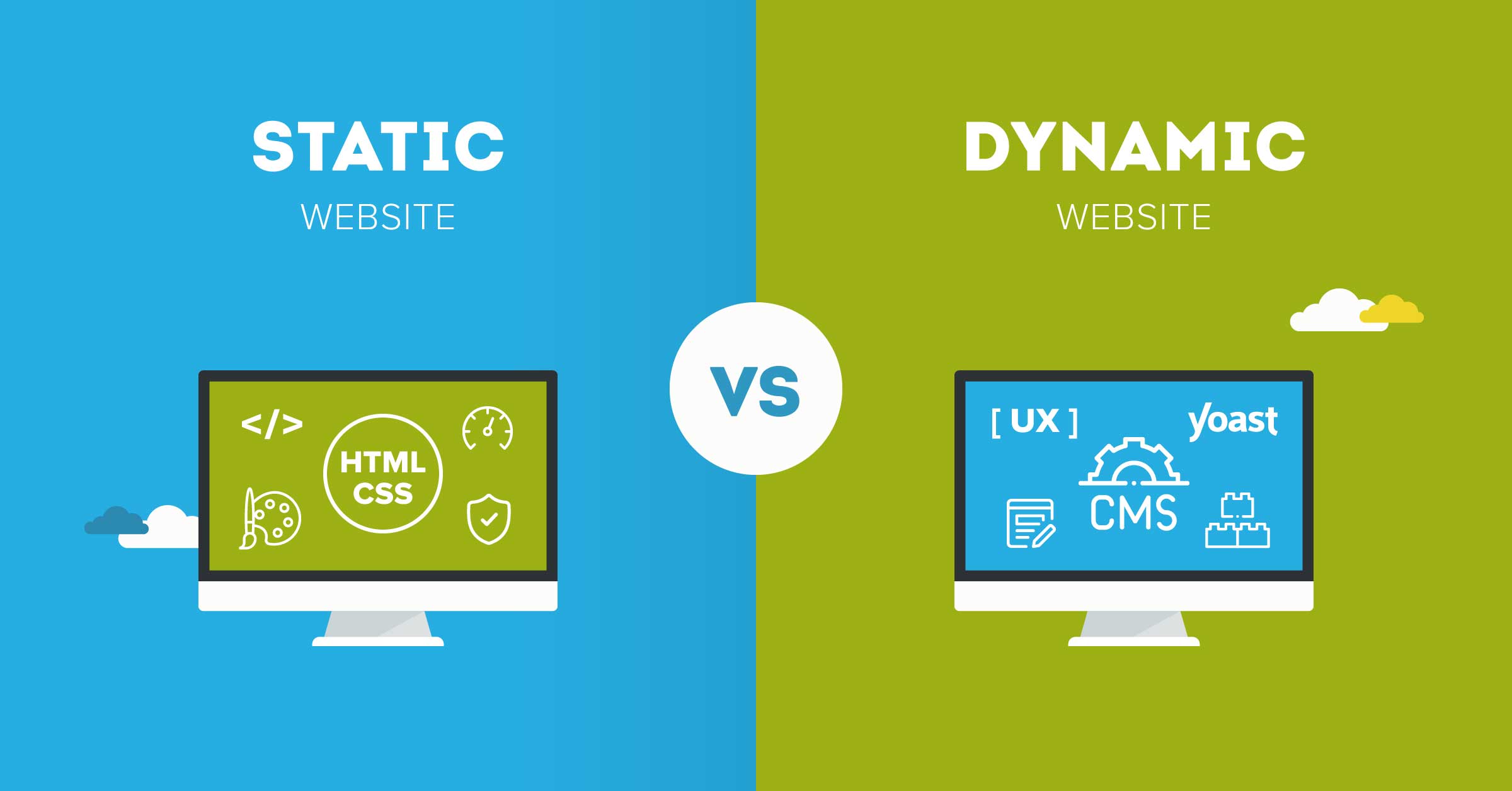What are Static & Dynamic Websites?
 Ankit Sandal
Ankit Sandal
Static Website
Basically, a Static Website is a site created by the use of basic web languages like; HTML, CSS, and JavaScript. It is a limited functional site with a lack of flexibility and no user interactions. It does not change frequently based on user interactions. A static website is a type of website that serves the same content to every visitor. Static websites do not use a database or any dynamic scripting language, which means they can be served quickly and efficiently. They are suitable for small or personal websites that don't require regular updates, user input, or dynamic content.
Advantages and Disadvantages of a Static Website
Advantages:
Speed: Static websites can be served quickly because they don't require any dynamic processing on the server. This means that they load faster, providing a better user experience.
Simplicity: Static websites are simpler to develop and maintain than dynamic websites. This is because they don't require any special software or programming languages, making them accessible to a wider range of developers.
Security: Static websites are less vulnerable to security threats because they don't use a database or run any dynamic code on the server. This makes them a good choice for sites that don't require user input or sensitive information.
Cost-effective: Static websites are typically less expensive to develop and maintain than dynamic websites because they don't require complex server-side technology.
Scalability: Static websites can be easily scaled to handle large amounts of traffic without the need for expensive infrastructure upgrades.
Portability: Static websites can be hosted on a variety of platforms, making it easy to change hosting providers if necessary.
Disadvantages
Limited functionality: Static websites can only serve pre-written content and do not support user interactions, dynamic content, or data storage.
Maintenance: Updating a static website requires manual updates to the HTML, CSS, and JavaScript files, which can be time-consuming and error-prone.
No database: Static websites don't have the ability to store data, which means that they cannot be used for e-commerce sites, social media sites, or other sites that require user data.
No server-side processing: Static websites cannot process user input or run any server-side code, which means that they cannot handle tasks like sending emails, storing user data, or providing real-time updates.
No CMS: Static websites don't have a content management system (CMS), which makes it difficult for non-technical users to update the site.
No analytics: Static websites don't have built-in analytics capabilities, making it harder to track site performance and user behavior.
Dynamic Website
A Dynamic Website is a type of website that generates content dynamically in response to user requests. It uses server-side scripting languages, such as PHP, Python, Ruby, or ASP.NET, to process user input and create dynamic content. The content is then sent to the user's web browser, where it is displayed in a dynamic and interactive manner. Dynamic websites can include features like user accounts, e-commerce functionality, real-time updates, and more. Unlike static websites, which serve the same content to every visitor, dynamic websites generate custom content based on the user's request, making them more flexible and scalable.
Advantages
User interaction: Dynamic websites support user interactions, such as form submissions, logins, and user accounts, which can greatly enhance the user experience.
Dynamic content: Dynamic websites can generate custom content for each user based on their request, providing a more personalized experience.
Real-time updates: Dynamic websites can provide real-time updates and notifications, making them well-suited for news sites, social media sites, and other applications that require real-time information.
Data storage: Dynamic websites can store and retrieve data from a database, making them a good choice for sites that need to manage user data or provide e-commerce functionality.
Server-side processing: Dynamic websites can perform server-side processing, such as sending emails, generating reports, and processing user input, which makes them more versatile than static websites.
CMS: Dynamic websites often include a content management system (CMS), which makes it easier for non-technical users to update the site.
Analytics: Dynamic websites can provide built-in analytics capabilities, making it easier to track site performance and user behavior.
Disadvantages
Complexity: Dynamic websites are more complex to develop and maintain than static websites, as they require server-side scripting and a database. This can make them more challenging for developers to work with and can increase the cost of development and maintenance.
Performance: Dynamic websites can be slower than static websites because they require server-side processing and database queries. This can impact the user experience, especially on sites with a large amount of traffic.
Security: Dynamic websites are more vulnerable to security threats because they use a database and run server-side code. This makes them a target for hackers and requires ongoing security measures to protect sensitive information.
Scalability: Dynamic websites can be more challenging to scale to handle large amounts of traffic, as they require more complex server infrastructure.
Cost: Dynamic websites can be more expensive to develop and maintain than static websites, due to the need for server-side scripting and a database.
Technical expertise: Dynamic websites require a higher level of technical expertise, as they involve server-side scripting and database development. This can make it more difficult for non-technical users to update the site.
If this helped you even a little bit, then show me your support by:
Following on LinkedIn: https://www.linkedin.com/in/ankit-sandal-573b351a9 .
Following on Twitter: https://twitter.com/Ankit_Sandal_ .
Subscribe to my newsletter
Read articles from Ankit Sandal directly inside your inbox. Subscribe to the newsletter, and don't miss out.
Written by

Ankit Sandal
Ankit Sandal
I am a graduated student in Economics Major. I am currently learning Full Stack Web Development and studying Multilingual Computer Application.